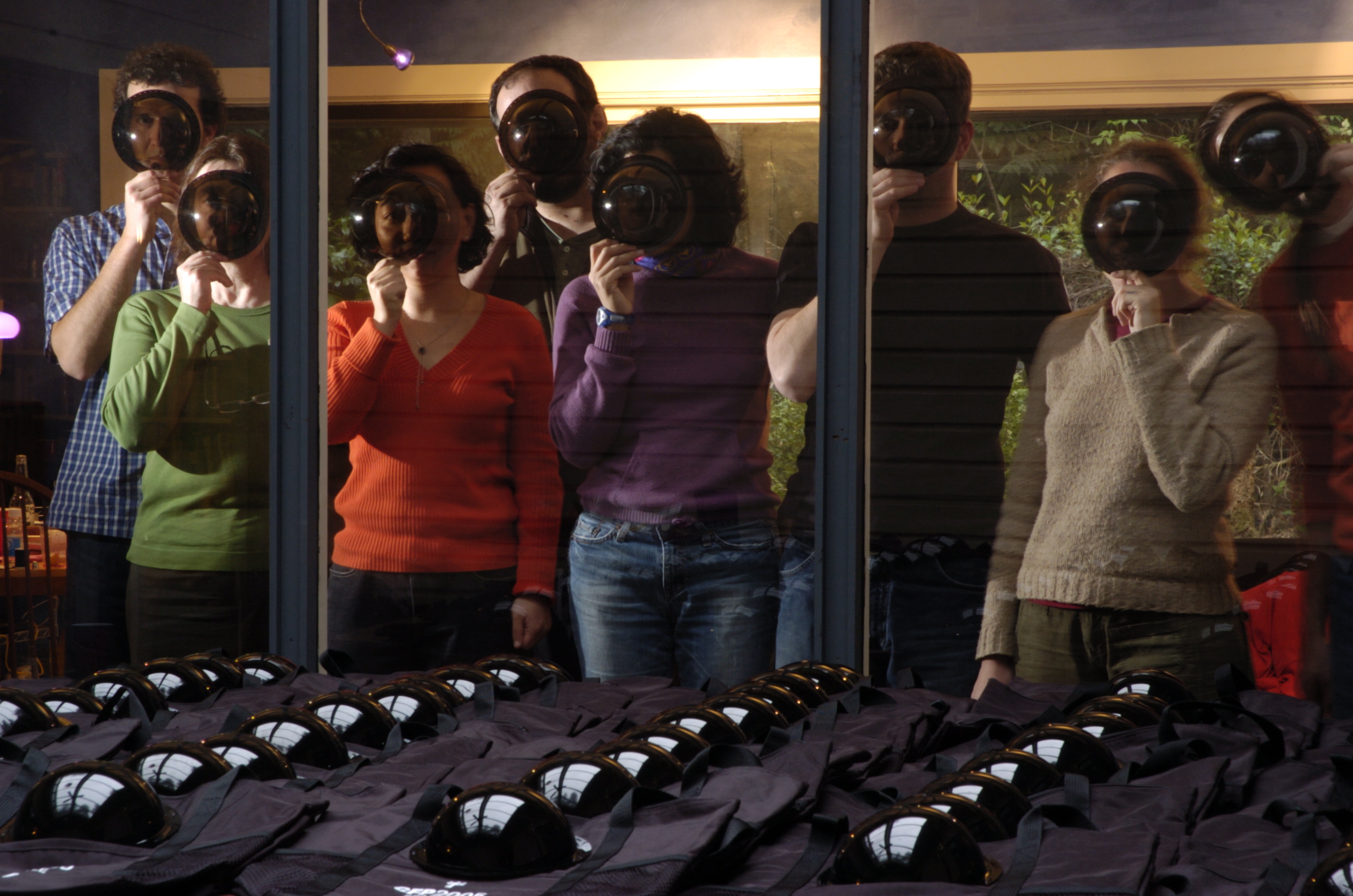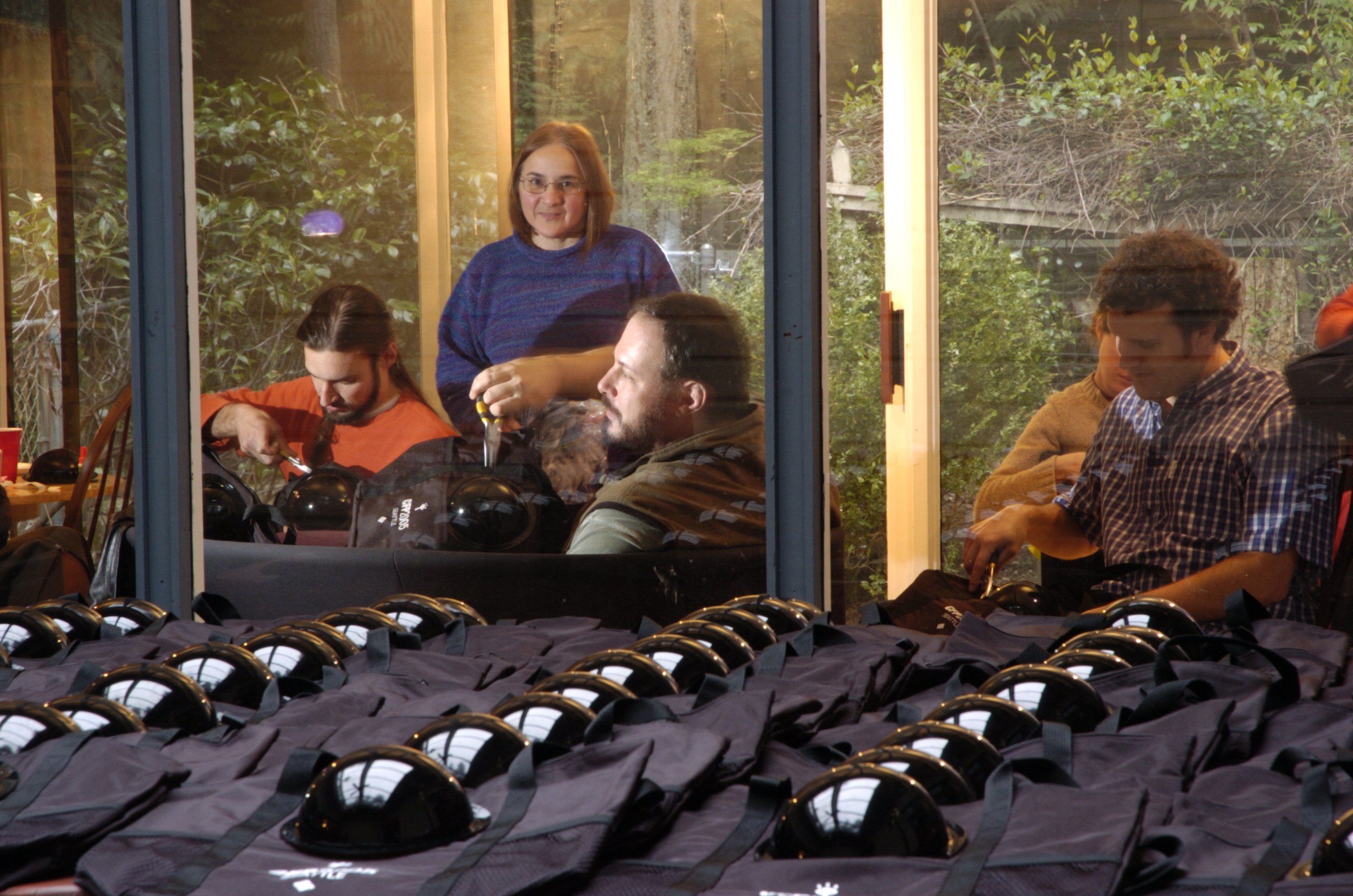SOUSveillance
Sousveillance, derived from French "sous" (below) and
"veiller" (to watch), is the art, science, and technologies of "People
Looking at". Sousveillance does not immediately concern itself with
what the people are looking at, any more than surveillance concerns
itself with who or what is doing the looking. Instead, sousveillance
typically involves small person-centric imaging technologies, whereas
surveillance tends to be architecture or enviro-centric (cameras in or
on the architecture or environment around us). Sousveillance does not
necessarily limit itself to citizens photographing police, shoppers
photographing shopkeepers, etc., any more than surveillance limits
itself along similar lines. For example, one surveillance camera may
be pointed at another, just as one person may sousveill another.
Sousveillance therefore expands the range of possibilities, without
limitation to the possibility of going both ways in an up-down
hierarchy.
With the miniaturization of cameras into portable electronic devices,
such as camera phones, there has been an increased awareness of
sousveillance (more than 30,000 articles, references, and citations on
the word "sousveillance" alone), and we are ready to see a new
industry grow around devices that implement sousveillance, together
with a new sousveillance services industry.
Includes inverse surveillance examples like Rodney King incident
Know your banker


equiveillance, inequiveillance

